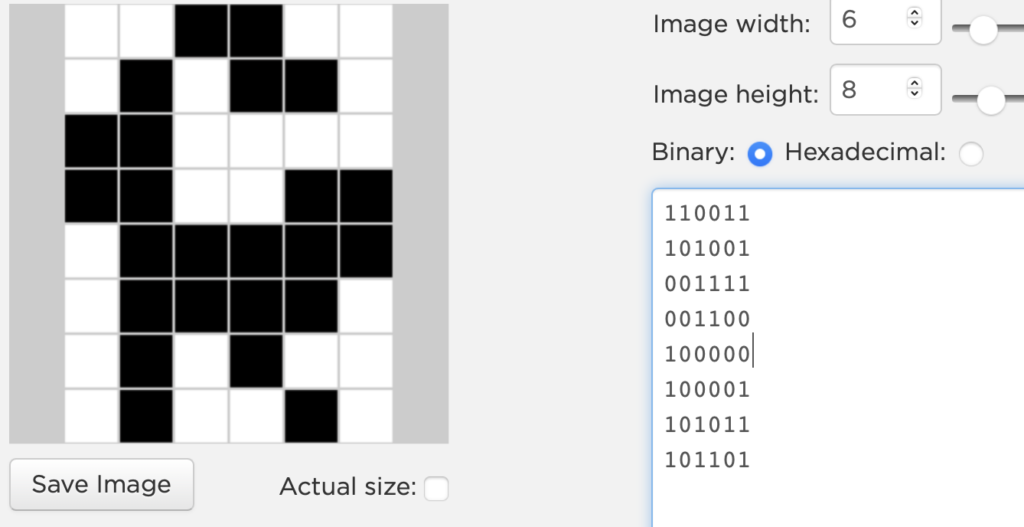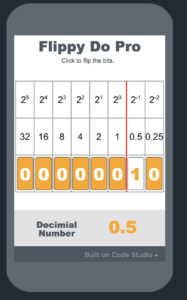CSP: Digital Information
Representing Text
based on resources from code.org
PBL by Silver Oaks
Food for thought
This list secretly represents four things we experience every year. This list is not complete – there are others that we could add to it.
01 01
26 01
15 08
02 10
Brainstorm with your parents or sibling what you think this list represents. When you think you have an idea, come up with another item to add to this list and be ready to explain why it belongs.
Activity
Representing text
In our warm-up, we used numbers to represent certain type of information. In today’s activity, we will also use numbers to represent something that computers use pretty frequently: text messages.
Using only numbers can you communicate the following messages to your friend? No letters or characters (including spaces) allowed! Come up with a system that allows you to do this.
- hey
- ttyl
- gm
Hint: Consider each character individually rather than the whole word at once.
Using ONLY the numbers in the system you just came up with, how would you communicate the following message:
oh no
Instructions
- Use your system from the last part to communicate the message above
- Are you able to communicate the above message EXACTLY? Reflect
- Update your system if needed!!
Using ONLY the numbers in the system you developed, how would you communicate the following message:
Great!
Instructions
- Use your system from the last task to communicate the message above
- Are you able to communicate the above message EXACTLY? Reflect
- Update your system if needed!!
- Note: Unlike earlier messages, this one has an Upper Case character (capital letter) in the message
Using ONLY the numbers in the system you developed, how would you communicate the following message:
Free at 5?
Instructions
- Use your system from the last task to communicate the message above
- Are you able to communicate the above message EXACTLY? Reflect
- Update your system if needed!!
Using ONLY the numbers in the system you developed, how would you communicate the following message:
Cya 2nite!
Instructions
- Use your system from the last task to communicate the message above
- Are you able to communicate the above message EXACTLY? Reflect
- Update your system if needed!!
What’s the minimum number of bits each of your system would need per character? How do you know?
Hint: Convert your largest number in your system into binary. How many bits does this number require?
Congratulations!! You just invented your own scheme for representing text with numbers!
Given we use text on our phones and computers all the time, we should assume there is a standard representation for most of the symbols you can type on an American keyboard.
Today you’re going to be looking at one called or ASCII (pronounced: “Ask-ee”) or the American Standard Code for Information Interchange
Introduction
ASCII
Now that you have started thinking about place value and overflow, we are going to work on a different problem. What happens when there aren’t enough place values to represent a number? You will explore this with a new version of the Flippy Do, the Flippy Do Pro!
Compare ASCII to the system you developed:
- What’s the same as the systems you created?
- What’s different?
- What is most interesting or surprising about this system?
wrap up
Reflection
Representing text is an example of abstraction, which is when we create simplified representations of something more complex. This lets us hide the details and instead focus on problems at a higher level.
Think
- What problem were we trying to solve today?
- What detail from the last few lessons was hidden or out of focus?
Sending text messages is an example of abstraction. For a computer, each character is really just a number, which itself is really a binary number. It all comes back to zeroes and ones!
What is another example of an abstraction in your everyday life? Something where you don’t completely understand how it works but you can still use it with confidence?
Answer the following activity in Google Classroom
Statement:
The binary pattern 01000001 represents the number 65.
Write a brief response explaining whether or not you believe this statement is always true. Explain your reasoning.










